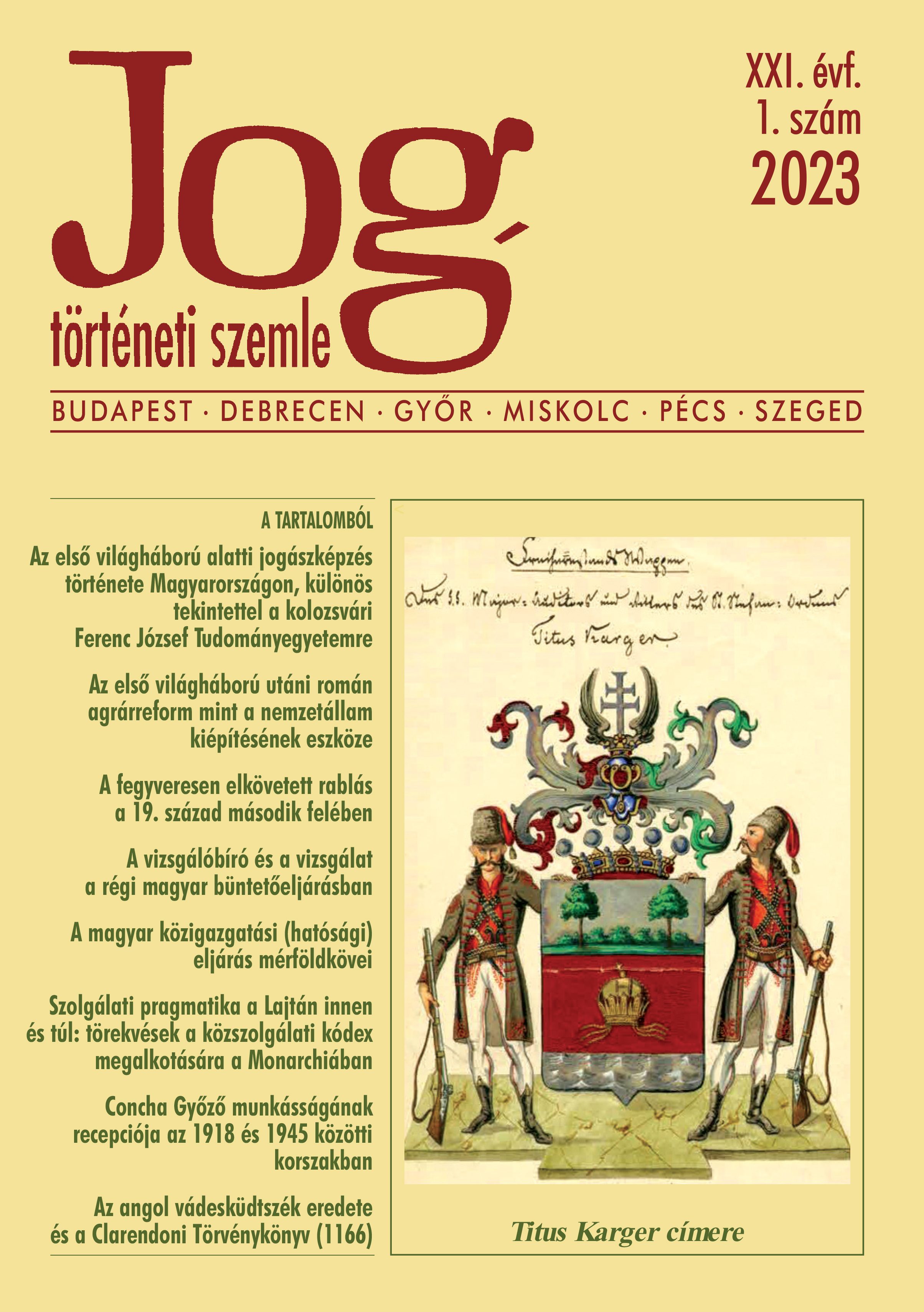The Romanian agrarian reform after the First World War as a means of building the nation state
DOI:
https://doi.org/10.55051/JTSZ2023-1p11Abstract
From 1866 Romania declared the principle of a unified nation-state, and from 1848 it pursued the goal of homogeneous unification of all Romanians in one state. The territorial and population growth that followed Romania’s victory in World War I decisively changed the country’s homogeneous social relations, but the homogeneous state goal of Greater Romania remained unchanged and was both realized and finallí failed within the new state borders. A prominent element of the nation-state program
was the agrarian reform implemented after the World War I. The contradiction between the declared legal policy and the realized state goal of the reform illustrates not only the distortions of the rule of law, but also its anti-minority attitude. While the stated goal was to make social relations more equitable, in reality it served to make it impossible for national and religious minorities to own property as a means of building the nation-state. The study examines the constitutional foundations and partial legislation of
land reform in Romania, the historical and legal process that justified the above results. The analysis of the legislation is complemented by a description of the cases of Romanian agrarian reform procedures carried out within the framework of the minority protection system created after the World War I.






